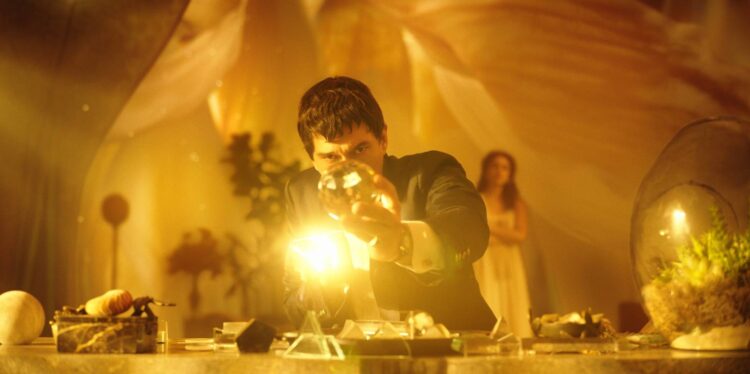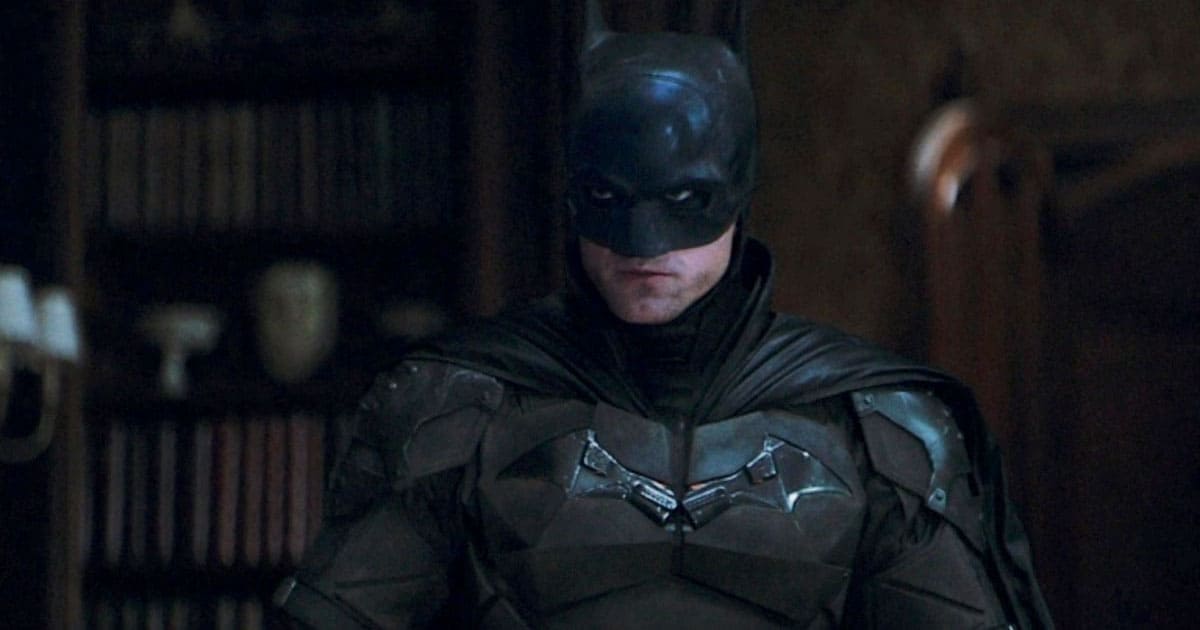If you dove head first into Francis Ford Coppola’s Megalopolis, you would get a concussion. The filmmaker’s supposed opus––a glitzy, gargantuan, long-gestating project that he conceived of in the late ‘70s, attempted to make more than once in the ‘80s, rewrote countless times over the last four decades, and eventually self-financed for $120 million due to lack of external support––has had cinephiles like myself drooling over its scope and potential for years. Alas, there is no deep end in this pool.
Don’t let that deter you though. Receive it with a healthy dose of doubt and let it reshape (and perhaps healthily lower) your expectations. Because, at the end of the day, for better and for worse, in awe and in tired confusion, Megalopolis is a garish wonder to behold.
Coppola recently said that “[his] first goal always is to make a film with all [his] heart,” and by those standards he’s done it again. Its ambition is real, sincere, felt, and, per Coppola, still leagues beyond where the average director’s imagination could take them, even if it’s goofy. Where depth is missing, unexpected comedy and camp rain down like softball-sized hail.
We open on a foreboding angle of Grand Central Station, the camera heavily tilted up and to the side, glaring into an ominous sky. The Chrysler Building––whose triangular stacked peak is the penthouse apartment and workplace of the contemporary architectural genius Caesar Catalina (Adam Driver)––juts out into the city at the top of the frame, much like Megalon––the material Caesar invented to renewably restructure New Rome from the ground up––pierces Mayor Cicero’s (Giancarlo Esposito) corrupt plan to rebuild the near-fallen city via industry: concrete and steel, as is tradition. Modeled after every past New York City mayor, Cicero is hated by all, booed when he enters any room.
Caesar’s right-hand man Fundi Romaine (Laurence Fishburne, who got his start through Coppola on Apocalypse Now) narrates us into the story, reciting a gravelly elegy for the people of New Rome as we peer across shadowed landscapes and into dark corners of the ailing metropolis. It isn’t long before we launch into a rather ill-conceived setting that makes for the first soon-to-be party theme for the cinephilic camp lovers that are bound to claim Megalopolis for their own: hundreds of shoddily rigged planks with loose ropes for handles overlooking competing models of the city where Cicero and Caesar propose their plans in front of the press, Design Authority, local government, and anyone who’s anyone in New Rome.
A description etched in sandy stone, the serving platter of the film’s title card and chapter cards, tells us it’s the third millennium, the 21st century. Yet, for all the film’s creativity, New Rome’s unique identity is left largely un-depicted (much like Megalon), the pieces we see of it either too muddy to make out or, more commonly, spitting images of modern-day Manhattan (with a touch of Roman flair).
What is Megalon, you ask? The valid question––at first loaded with potential, at last void of it––burns out over the course of the film, its detail lost in the fray of a story that never unfolds its high concepts so much as simply announces their presence. The question fades naturally when you realize there’s nothing behind the curtain: it’s a flawless fantasy material. That’s all. It’s messy and uninteresting in its simplicity, like so many of the seemingly intriguing elements of Megalopolis.
Don’t ask me to explain the Soviet satellite fallout, or the actual plans to rebuild the city, or what Dustin Hoffman, Talia Shire, Grace VanderWaal, and Jason Schwartzmann were supposed to contribute as characters or actors, or, most notably, how or why (or if) Caesar can stop time, a bewildering detail that goes wholly untouched. It’s among the film’s most questionable moments/details.
Others include: when a playful “Sex and the City”-esque jazz-bop soundtracks a messy work montage, or when Julia (Nathalie Emmanuel), the Mayor’s daughter, goes through a phase of leaving herself serious, sleuthy private eye voice memos, almost all of which got at least a chuckle out of the audience. But that’s also the radical charm of Megalopolis.
Around every corner, it is so unexpected, so silly, so sincere that you can’t help but smile at the camp and the accomplishment of it all. It might eventually go down as a beloved comedy above all else, an inspired but relatively out-of-touch satire that reflects the faded artistry of one of film history’s greats as much as it reflects the contagious passion that has always defined and spotlit his career. Plus, it’s not all faded.
There are moments of genuine, galvanized creativity. Like the three-split-screen montages he teases in the trailer, whispered conversations shot in a vignetted frame, and most notably, an added filmic dimension when the house lights came up mid-movie, a man walked out onto stage with a microphone, and asked the pre-recorded Caesar questions that were answered by the actor on screen.
The humor is equal parts intentional and unintentional, the latter reflected in the bad ending, and the former reflected in a constant reference to pop star Vesta Sweetwater’s chaste new hit, “My Pledge” and the city’s bizarre collective motivation to celebrate her well-marketed virginity. (Perhaps Coppola’s funniest, most incisive read on modern culture––a clear reflection of Taylor Swift).
Performances are hit and miss, but it’s worth noting that the three best performances come from comedic actors who, certainly more than some of their colleagues, seemed to pick up on the unspoken silliness of the project while filming. SNL cast member Chloe Fineman plays the outrageous tone perfectly, slinking and posing around with over-pursed lips, the sister of the incestuous brother-sister duo that are the “richest kids in the world,” the offspring of Hamilton Crassus III (Jon Voight), the celebrity head of the bank.
Shia LaBeouf slots himself neatly into the lude brother role, the character’s entitled lunacy not much of a stretch away from the actor’s real-world celebrity image. Aubrey Plaza, who plays Wow Platinum, the tabloid TV personality who seems to be in bed with everyone, nails the tone, and is, too, a veteran of a venerated sitcom.
For all that was lost to anticipation, there is a strange, steadily growing post-watch fascination that’s sprouted up in the meantime, a deep joy in Coppola having pulled it off, and a fresh sense of wonder in having witnessed the only nine-figure independent film ever made. We have our first, and now we have an idea of what that could look like.
The writer, director, and producer is already responsible for so many of the best films made from the late ‘60s to the early ‘90s. (One can only dream of what a 1970s or ‘80s production of the film would’ve looked like, when Coppola was firing on all cylinders). Needless to say, he owes us nothing. Yet, even in his mid-80s, even in his lesser works, Coppola pushes us into new cinematic territory, beyond the boundaries that keep the medium recognizable.
Marcus Aurelius once said, “Our life is what our thoughts make it.” As the case of Megalopolis proves, so is our art. So are our films. When it’s all said and done, Coppola risked it all (again) to make his dream project, and if he believes it’s “the best work [he’s] ever had the privilege to preside over,” then that’s what his thoughts make it. What matters to us is that he made it, that the Coppola rallying cry lives on in the director’s refusal to let art be dictated by money, echoing in the hearts of independent filmmakers everywhere.
Megalopolis premiered at the 2024 Cannes Film Festival.
The post Cannes Review: Francis Ford Coppola’s Megalopolis is a Garish Wonder to Behold first appeared on The Film Stage.





